The Science Behind Clouds – On a Cloudy Day You Can See Weather
Have you ever wondered how clouds form? We all learn the water cycle in school – water falls from the clouds in the form of rain or snow and collects on the ground. The water on the ground heats up and turns to vapor and the vapor travels up into the atmosphere and creates clouds.
But how do those clouds form? Here’s an experiment that demonstrates how the water molecules join together and form a cloud.
Before you start on your own cloud, let’s learn a little more about clouds.
A cloud is a lot of droplets of water and or ice crystals, depending on the temperature. The droplets float in the air molecules.
Even though we don’t see them, water molecules are in the air all around us. These airborne water molecules are called water vapor. When the molecules are bouncing around in the atmosphere, they don’t normally stick together.
Clouds on Earth form when warm air rises and its pressure is reduced. The air expands and cools, and clouds form as the temperature drops below the dew point. In other words, cold air cannot hold as much water vapor as warm air. Invisible particles in the air in the form of pollution, smoke, dust or even tiny particles of dirt help form a nucleus on which the water molecules can attach. When these droplets come together, they form a cloud.
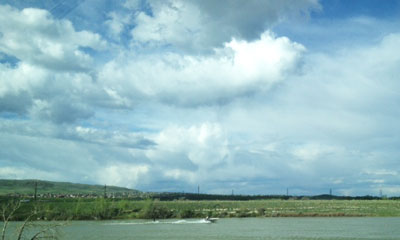
Why do clouds float instead of sinking to the earth? The water droplets in a cloud are heated up by the sun. The cloud and the water vapor inside are warmer than the air around it. Warm air rises, cold air sinks. How much water vapor, temperatures at different heights, wind and other air masses determine what altitude the clouds are formed.
Try this simple and popular Colorful Rain Cloud in a Jar activity –
Materials
- Clear jar
- Water (any temperature)
- Shaving cream
- Cup of water with a little food coloring
- Pipette (or spoon)
- Food coloring
- Fill jar about 3/4 full with water
- Spray shaving cream to cover top of water completely.
- Drip water on top of the shaving cream using pipette.
- Drip food coloring on top of the shaving cream.
The clouds and the storms they form move in the air currents, wind and jet stream.
Here’s another popular cloud activity – Cloud in a Jar
This activity requires adult help.
Materials
- Jar
- Hot Water
- Ice
- Plate or jar lid
- Matches
- Fill jar about half way full with very hot water. (Have an adult help with this part)
- Cover the jar with the plate or lid and place ice on top.
- Let it sit for a few minutes – you will start to see a cloud form. Watch the convection currents as the hot air rises to meet the cold air and then sinks again.
- Light a match (bring your adult helper back in for this part), let it burn down for a few seconds.
- Blow out the match and place it between the jar mouth and plate.
- The cloud and the air currents will be more visible.
- Lift off the plate and watch the cloud disperse.
- Try it again!
Additional Resources:
- Scholastic Cloud Key – How to Find Clouds and Categorize Them
- Weather Wiz Kids
- Wind Activities
- Teach Preschool Added Activity with Colorful Rain Cloud in a Jar



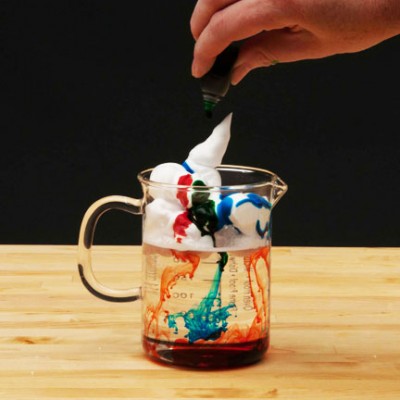
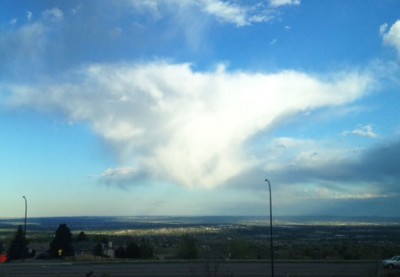
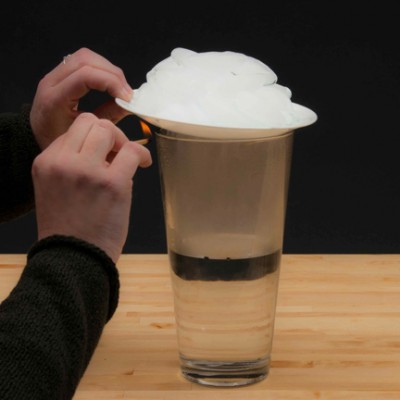
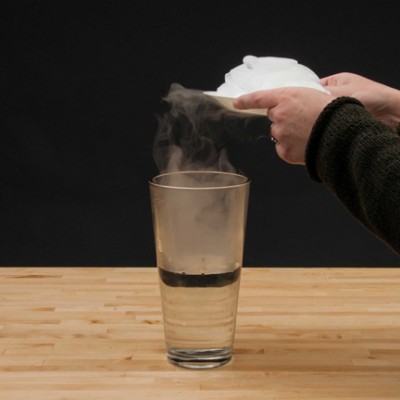

Thank you for your experiment, I will use this experiment next year when I teach “Weather” Unit, along with the “Forecast” science rap video to teach vocabulary from http://www.commoncorerap.com. My students really enjoy singing to the chorus.
I discovered that water (every molecule of water ) has a nature “to move to colder”. Your explanation denied this main point about rain and cloud. It is the nature of water from another liquid. If you interest about me, I will share and work with you about my theory .
Hi i would like to talk about the second experiment. If we didnt add the match and the water wouldnt it have the same result as just hot water in a glass. Just steam.